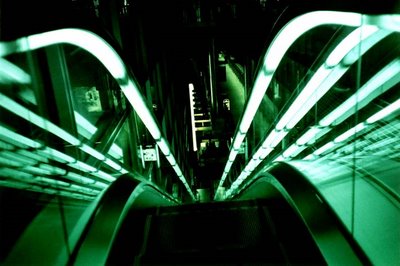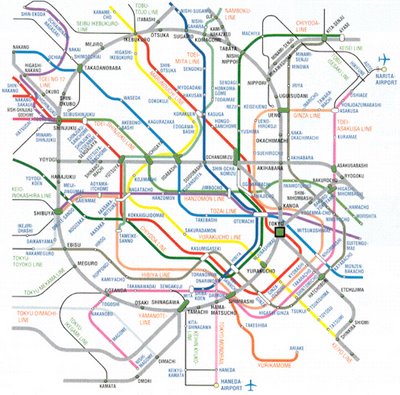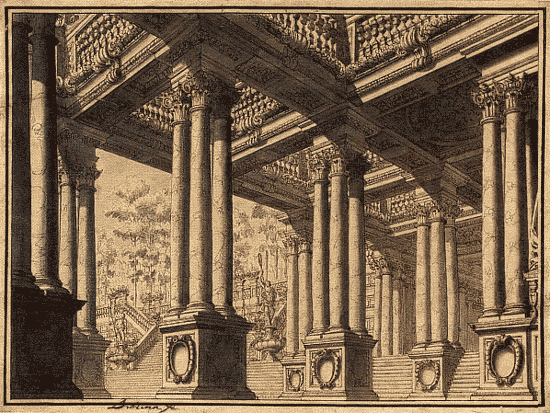 [Image: Tokyo at night, courtesy of NASA’s Earth Observatory].
[Image: Tokyo at night, courtesy of NASA’s Earth Observatory].
At the height of the Cold War, the sprawling, decentralized suburban landscape of the United States was seen by many military planners as a form of spatial self-defense. As historian David Krugler explains in This Is Only a Test: How Washington D.C. Prepared for Nuclear War, “urban dispersal” was viewed as a defensive military tactic, one that would greatly increase the nation’s chance of survival in the event of nuclear attack.
Specially formatted residential landscapes such as “cluster cities” were thus proposed, “each with a maximum population of 50,000.” These smaller satellite cities would not only reshape the civilian landscape of the United States, they would make its citizens, its industrial base, and its infrastructure much harder to target.
“This might seem the stuff of Cold War science fiction,” Krugler writes, “but after World War II, many urban and civil defense planners believed cluster cities, also called dispersal, should be the future of the American metropolis.”
These planners, like the U.S. Strategic Bombing Survey, imagined atomic firestorms engulfing American cities and advocated preventive measures such as dispersal. Just one or two atomic bombs could level a concentrated metropolitan area, but cluster cities would suffer far less devastation: enemy bombers could strike some, but not all, key targets, allowing the unharmed cities to aid in recovery.
Krugler points out that this suburban dispersal was not always advised in the name of military strategy: “Many urban planners believed dispersal could spur slum clearance, diminish industrial pollution, and produce parks. Not only would dispersal shield America’s cities, it would save them from problems of their own making.”
However, the idea that urban dispersal might be useful only as a protective tactic against the horrors of aerial bombardment overlooks other threats, including earthquakes and tsunamis.
Earlier this week, Japanese prime minister Naoto Kan was advised “to decentralize Japan” out of fear of “Tokyo annihilation danger.” Indeed, we read, the recent 9.0 earthquake, tsunami, and partial nuclear meltdown at Fukushima together suggest that “the nation must reduce the role of its capital city to avert an even greater catastrophe.”
Takayoshi Igarashi, a professor at Hosei University, explains: “I told the prime minister that nationwide dispersal is the first thing we need to do as we rebuild. We have no idea when the big one’s going to hit Tokyo, but when it does, it’s going to annihilate the entire country because everything is here.” His conclusion: “The lesson we need to take away from this disaster is that we have to restructure Japan as an entire nation”—a seismic decentralization that relies as much on horizontal geography as on vertical building code. This could thus be “the nation’s biggest investment in urban planning in decades.”
The idea that urban design might find a reinvigorated sense of national purpose in response to a threat in the ground itself is fascinating, of course, perhaps especially for someone who also lives in an earthquake zone. But the prospect of large-scale urban dispersal remaking the urban landscape of Japan—that Tokyo itself might actually be broken up into smaller subcities, and that future urban planning permission might be adjusted to enforce nationwide sprawl as a form of tectonic self-defense, from megacity to exurban lace—presents an explicit spatialization of Japanese earthquake policy that will be very interesting to track over the years to come.
(Spotted via @urbanphoto_blog).

 [Image: From the
[Image: From the 




